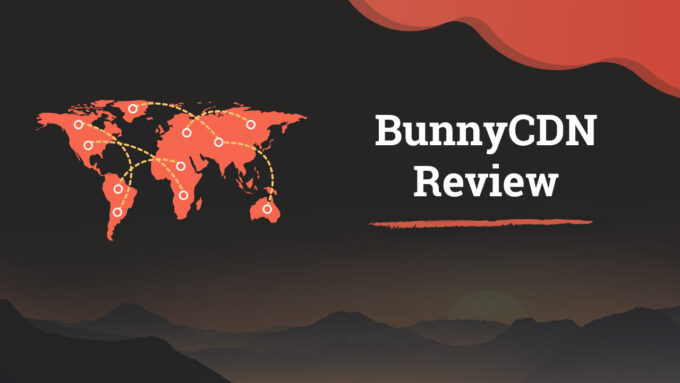There are several options when considering a content delivery network (CDN) for your business. Two of the most popular are Amazon Web Services (AWS) Cloudfront and BunnyCDN. Before deciding which CDN to use, consider the features you need and your budget.
What is AWS Cloudfront CDN?
AWS CloudFront is designed to help customers deliver their content efficiently with low latency, high transfer speeds, and high availability. AWS Cloudfront offers many features, including global distribution, instant scaling, and built-in security. AWS Cloudfront is highly cost-effective, with prices starting from as low as $0.085 per GB of data transferred. If you are looking for an affordable CDN solution, is AWS CloudFront an ideal choice?
What is BunnyCDN?

BunnyCDN is a powerful content delivery network (CDN) that offers a variety of features to help customers improve their website’s performance. One of the most notable features of BunnyCDN is its advanced caching system, which can help speed up the website’s load times. Additionally, BunnyCDN offers a variety of other features, such as support for multiple protocols, custom CNAMEs, and more.
AWS Cloudfront vs. BunnyCDN
Both BunnyCDN and AWS Cloudfront offer various features and pricing options to suit the needs of different customers. So, when considering AWS Cloudfront vs. BunnyCDN, which option is better?
Features
BunnyCDN offers a range of features that make it a reliable and efficient CDN service. Some of these features include:
- Global reach: It has a large network of servers spread across North America, Europe, Asia, Australia, and South America. This extensive network enables it to deliver content quickly to users worldwide.
- Security: Offers advanced security features such as SSL/TLS encryption, DDoS protection, and access control. These features help to protect websites and content from security threats and ensure that data is transferred securely.
- Flexibility: BunnyCDN supports a range of content types, including static and dynamic content. It also offers easy integration with popular content management systems such as WordPress and Drupal.
- Easy setup: It has an easy-to-use interface that simplifies the setup process. This user-friendly interface makes it easy for beginners to get started with CDN services.
Pricing

BunnyCDN uses a pay-as-you-go pricing model, which means that users only pay for the resources they use. There is also a free trial available for up to 14 days, enabling users to test the service before committing to a paid plan.
It’s pricing is more affordable than many other CDN services, making it a great option for users on a tight budget.
Pros and Cons
Overall, it has several benefits that make it a popular choice for website owners looking for a reliable and affordable CDN service. Its affordability, fast content delivery, and advanced security features make it an attractive option, especially for small to medium-sized businesses. Additionally, BunnyCDN’s user-friendly interface simplifies the setup process and makes it easy for beginners to get started.
However, it is worth noting that it’s network coverage may not be as extensive as other CDN services. This may result in longer load times for users located in certain regions. Additionally, while BunnyCDN offers integration with other services, it may not be as seamless as other CDN services. Despite these limitations, BunnyCDN remains a reliable and affordable option for website owners looking to improve their website performance.
Advantages of AWS CloudFront

AWS Cloudfront offers a pay-as-you-go model, a subscription-based model, and various other pricing options. AWS Cloudfront provides multiple features, including setting up a CDN with just a few clicks. It offers a user-friendly interface that only requires a little learning.
In addition to improved performance, CloudFront offers security features, such as SSL encryption, to help keep your content safe. And, because CloudFront is a managed service, you don’t have to worry about maintaining your infrastructure. AWS takes care of all of that for you.
AWS CloudFront speeds up your content delivery to users worldwide by caching the content at points of presence (PoPs) around the globe, then delivering it to users from the nearest PoP. This reduces latency and improves performance.
Comparison

When comparing them, there are several factors to consider. These include performance, security, cost, ease of use, and integration with other services.
Performance is a crucial factor when selecting a CDN service. Both of them offer fast content delivery and low latency. However, AWS Cloudfront’s network coverage is more extensive than BunnyCDN, enabling it to deliver content to more locations worldwide.
Security is another important consideration. Both of them offer advanced security features such as SSL/TLS encryption and DDoS protection. However, AWS Cloudfront’s security features are more comprehensive and offer greater customization options.
Cost is also an essential factor. Both of them use a pay-as-you-go pricing model, enabling users to pay only for the resources they use. However, BunnyCDN is more affordable than AWS Cloudfront, making it a better choice for users on a tight budget. BunnyCDN also offers a free trial, allowing users to test the service before committing to a paid plan.
Ease of use is another consideration when comparing AWS Cloudfront vs. BunnyCDN. BunnyCDN has a more straightforward setup process and a user-friendly interface, making it easy for beginners to get started. AWS Cloudfront, on the other hand, has a more complex setup process and may require more technical expertise.
Integration with other services is also important, particularly for users who rely on other AWS services. It offers seamless integration with other AWS services, enabling users to easily incorporate it into their existing infrastructure. BunnyCDN also offers integration with other services, but it may not be as seamless as AWS Cloudfront.
Conclusion
When it comes to features, both BunnyCDN and AWS Cloudfront offer a variety of features to suit the needs of different customers. If you are still determining how much bandwidth you will need, BunnyCDN may be the better option. But if you want various features, AWS Cloudfront may be the better option. Sometimes it pays to seek help from an expert, but once you have decided on the option to use, choose a reliable, honest, and reputable service provider.









